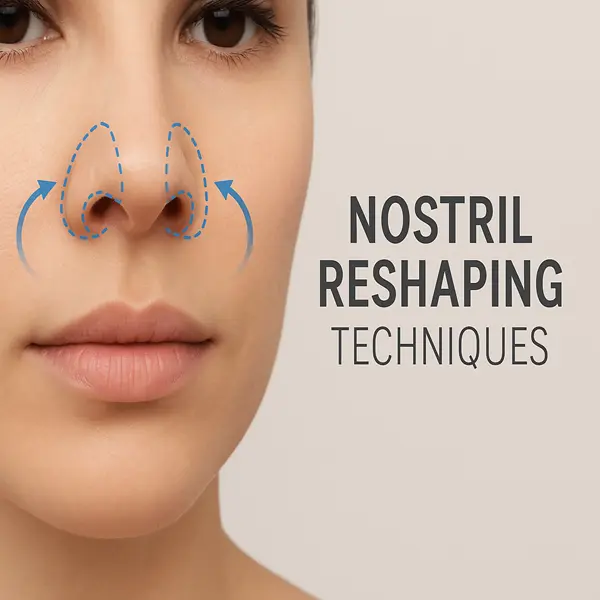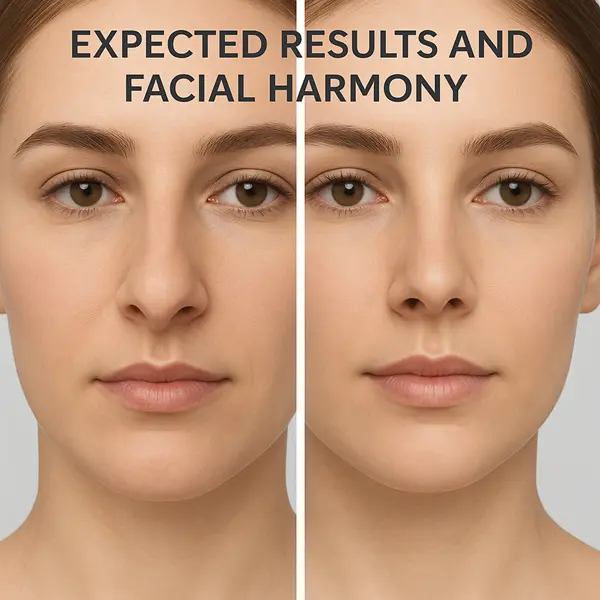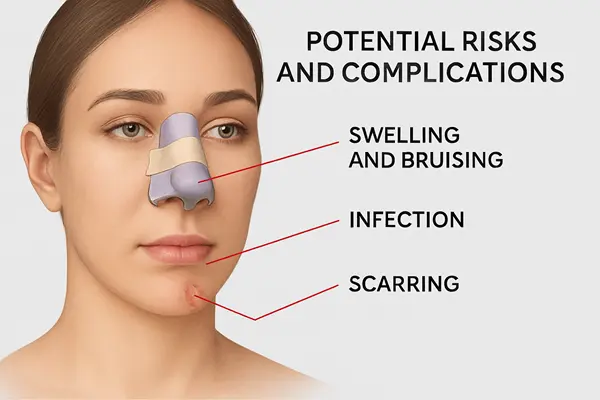Nostril Reshaping Techniques Rhinoplasty, commonly known as nose job surgery, can indeed make nostrils smaller through specialized surgical techniques.
Rhinoplasty, commonly known as nose job surgery, can indeed make nostrils smaller through specialized surgical techniques. Many patients seek nostril reduction as part of their rhinoplasty procedure to achieve better facial balance and proportion. Understanding the surgical options, candidacy requirements, and realistic expectations is crucial for anyone considering this cosmetic enhancement.
Alar base reduction is the primary surgical technique used to reduce nostril size. This procedure involves removing small wedges of tissue from the base of the nostrils where they meet the cheek. The surgeon carefully excises excess skin and tissue, then sutures the area to create smaller, more refined nostril openings. This technique is particularly effective for patients with wide or flared nostrils that appear disproportionate to their facial features.
Beyond alar base reduction, surgeons may employ additional nostril reshaping methods. These can include internal nostril modifications, where the surgeon works from inside the nose to adjust the nostril shape without external incisions. Cartilage grafting may also be used to provide structural support and achieve the desired nostril contour. The specific technique chosen depends on the patient's anatomy and aesthetic goals.


The best candidates for nostril reduction surgery typically have nostrils that appear too wide, flared, or asymmetrical in relation to their other facial features. Ideal candidates should be in good overall health, have realistic expectations about surgical outcomes, and be non-smokers or willing to quit smoking before and after surgery.
Patients who may benefit most from this procedure include those with naturally wide nostril bases, individuals whose nostrils appear disproportionate after previous nasal surgery, or people seeking to restore facial balance following injury or trauma. Age is also a consideration, with most surgeons recommending patients wait until facial growth is complete, typically after age 16-18.
Nostril reduction surgery can achieve significant improvements in facial proportion and aesthetic balance. Patients can expect smaller, more refined nostril openings that complement their overall facial structure. However, the key to successful outcomes lies in maintaining
natural-looking results that preserve facial harmony rather than creating an overly surgical appearance.
The healing process typically takes several weeks, with initial swelling subsiding within the first month. Final results become apparent after three to six months as tissues fully settle. Patients should expect subtle but noticeable improvements that enhance their natural features rather than dramatically altering their appearance.
Like any surgical procedure, nostril reduction carries certain risks. Scarring is a primary concern, though experienced surgeons place incisions strategically to minimize visible scarring.
When scars do form, they typically fade significantly over time and are often barely noticeable.
Asymmetry represents another potential complication, where nostrils may heal slightly differently, creating an uneven appearance.
Other risks include infection, bleeding, altered sensation, and breathing difficulties. Choosing a board-certified plastic surgeon with extensive rhinoplasty experience significantly reduces these risks.
Before undergoing nostril reduction, patients commonly express concerns about maintaining natural breathing function and avoiding an “overdone” appearance. Open communication with your surgeon about desired outcomes and realistic expectations is essential for satisfaction.
Most patients experience temporary nasal congestion during healing, but permanent breathing issues are rare when the surgery is performed correctly. The goal is to achieve nostrils that appear naturally proportionate to the rest of the face while maintaining full functionality.

A: The procedure typically takes 1-2 hours, depending on the complexity of the case and whether it's combined with other rhinoplasty techniques.
A: Incision lines are placed strategically at the natural creases where nostrils meet the cheek. While some scarring is inevitable, it typically fades significantly and becomes barely noticeable.
A: When performed by an experienced surgeon, nostril reduction should not negatively impact breathing. Temporary congestion during healing is normal but resolves as swelling subsides.
A: The amount of reduction depends on individual anatomy and aesthetic goals. Surgeons typically aim for subtle, natural-looking improvements rather than dramatic changes to maintain facial harmony.
Areas of Expertise

"Rhinoplasty offers an aesthetic and functional appearance by providing facial harmony."
"Rhinoplasty offers an aesthetic and functional appearance by providing facial harmony."
Detailed Info"Sinusitis is a painful condition caused by inflammation of the sinuses around the nose."
"Sinusitis is a painful condition caused by inflammation of the sinuses around the nose."
Detailed Info"Tonsil diseases are conditions that cause infection and swelling in the throat."
"Tonsil diseases are conditions that cause infection and swelling in the throat."
Detailed Info"Adenoids in children are enlarged lymphoid tissue that can cause nasal congestion."
"Adenoids in children are enlarged lymphoid tissue that can cause nasal congestion."
Detailed Info"Botulinum Toxin provides a youthful and smooth appearance on the face by reducing wrinkles."
"Botulinum Toxin provides a youthful and smooth appearance on the face by reducing wrinkles."
Detailed Info"In children, otitis media can cause earache and hearing problems."
"Facial rejuvenation with non-surgical methods reduces wrinkles and revitalizes the skin."
"Facial rejuvenation with non-surgical methods reduces wrinkles and revitalizes the skin."
Detailed Info"Sleep apnea is a disorder that causes breathing pauses during sleep."
At Dr. Osman Halit Çam’s clinic, we offer internationally recognized, patient-centered care with cutting-edge techniques in modern rhinoplasty and facial aesthetics.
From consultation to recovery, our mission is to provide personalized treatment in a safe, comfortable, and world-class medical environment.
Health innovations, treatment processes, and the latest news about our clinic are shared here.
A Comprehensive Guide to Rhinoplasty Correction Nose Job for Crooked Nose Nose job for crooked nose correction, understanding the procedure, benefits, and what to expect can help you make an informed decision about this transformative treatment. Get Info Nose job for crooked nose A crooked nose can significantly impact both your appearance and quality of […]
Your Complete Guide to Rhinoplasty and Piercings Can I Get a Nose Job with Nose Piercing Can I get nose job with nose piercing? This is one of the most common questions patients ask when planning their cosmetic surgery journey. Get Info Can I Get a Nose Job with Nose Piercing? If you’re considering rhinoplasty […]
What Older Adults Need to Know About Nose Surgery Rhinoplasty When You Get Old Rhinoplasty when you get old presents unique considerations that differ significantly from procedures performed on younger patients. Get Info What Older Adults Need to Know About Nose Surgery Rhinoplasty when you get old presents unique considerations that differ significantly from procedures […]
Each of the contents on this site has been prepared for informational purposes. Do not apply any of the treatment methods described on the site without the supervision of a doctor. Otherwise, the site management and Assoc. Prof. will not be responsible in any way for any problems that may arise. Dr. Osman Halit Çam is not responsible.
© 2023 – All Rights Reserved. Assoc. Dr. Osman Halit Cam
Last Updated: 25.07.2025